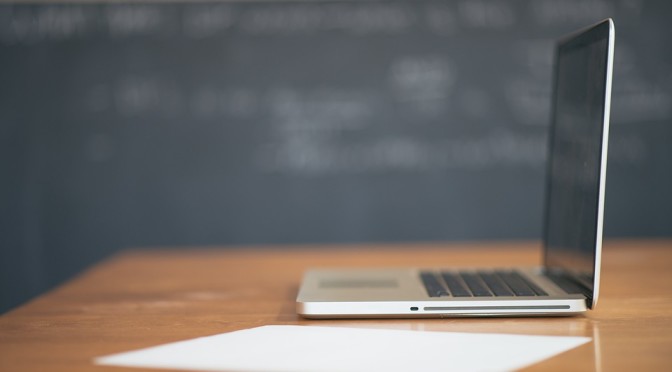Technology is steadily increasing in prevalence in our everyday lives, which is reflected in our UCWbL appointments. Laptops are an essential part of work in the UCWbL. Tutors use them to write logs after every appointment or to check on upcoming appointments. Writers use them to write their drafts of essays, which some professors accept electronically. It is entirely possible today for a paper to never actually be printed on the page. Since laptops are such an essential part of the peer tutoring and the writing process, it is only natural that they would become integrated in Face-To-Face appointments.
What has previously not been discussed, and what I chose to spend a quarter researching, is how the introduction of this screen affects the body language of the tutors and the writers involved in the appointment. I found, through this research, that the integration of the laptop into a Face-to-face appointment does affect the appointment in these three specific ways:
- Decreased Eye Contact
One of the most widely suggested and accepted forms of body language is eye contact. Strong eye contact shows an interest in the speaker. It also allows for the tutor and the writer to connect–offering sufficient eye contact may make a person seem more personal and friendly. Generally, in the appointments without laptops that I oversaw, eye contact would remain present and steady throughout the hour. Once one laptop was introduced into the appointment, however, then eye contact decreased drastically. Screens tend to be much more visually exciting than looking at another person, and they draw our eyes. When a laptop is right in front of a tutor and a writer, most often they will be making more contact with the screen then they are with each other. I found that this decrease continues once two laptops are brought into the appointment. If both the tutor and the writer have a laptop in front of them, they will have very little eye contact at all.
2. A Different Hand Gestures
Hand gestures differ dependent on the person. However, there was a specific trend that I noticed once laptops were on the table between the writer and the tutor. Overall, if there was one laptop or two laptops in front of the peers, then the majority of hand gestures would be focused towards the screen. This seemed to be directly connected to the amount of eye contact that was being made. If the person was looking at the screen, then generally they would be making gestures very focused towards the screen, whereas in appointments without a computer, there were often more open and descriptive hand gestures. Once the eyes were drawn to the screen, then the hand gestures seemed to follow.
3. Farther Positioning of Tutors and Writers
In one of the texts that we study in the UCWbL class (“Minimalist Tutoring: Making the Student Do all the Work”), author Jeff Brooks advocates for the peer tutor to sit directly next to the writer so as to strengthen the feeling that the tutor is a peer, not a teacher. Often this is put into practice in appointments with paper drafts where the peer tutor and the writer sit side-by-side in order to both view the paper equally. This also held true for appointments with one laptop. When there were two laptops introduced into the appointment, though, then the positioning of the writer and the tutor become much less consistent. Though there were instances where the two peers would sit next to each other, it was much more common than in other instances that the two peers would sit farther away from each other.
These three specific trends in body language that I noticed in appointments with laptops are different from the body language that is generally seen in appointments without laptops. I would propose that the next steps in studying and understanding this phenomenon would be to start studying what body language should be suggested for appointments with computers, as this is clearly a growing trend that will need its own set of best practices in the future. Through my research, I was not able to conclude with any suggestions on improvement to body language in appointments with computers, but I hope that by raising awareness of the change in body language that occurs when a computer is introduced into the appointment, some recommendations for how to be mindful of body language and use it effectively in these situations may come to light in the future.
Discover more from UCWbLing
Subscribe to get the latest posts sent to your email.

